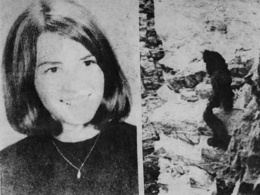May 19, 1951: Young Ladies Seeking Adventure
Police had to be sent to downtown London to control an unruly crowd of over 500 women who had gathered in response to a newspaper ad that read, "Well set-up young gentleman with honorable intentions invites young ladies seeking adventure to meet him on the steps of the Criterion restaurant, Lower Regent St., 7:15 p.m., May 19. Identified by red carnation and blue and white spotted scarf. Code word: 'How's your uncle?'" The ad turned out to be a hoax run by BBC DJ Brian Johnson who had been hoping to find a few young women to interview on his Saturday night program. He said, "I never expected more than a few girls." [
Spokane Daily Chronicle]
May 19, 2000: Charles de Jaeger Dies
Charles Theophile de Jaeger died on May 19, 2000. He had worked as a cameraman for the BBC, but he was most famous as the creator of the 1957
Swiss Spaghetti Harvest April Fool's Day hoax, which involved the news show
Panorama reporting that Swiss farmers were experiencing a bumper spaghetti crop. The segment included footage of Swiss peasants pulling spaghetti from trees. The idea for the hoax grew out of a remark one of De Jaeger's school teachers had once said to his class: "Boys, you're so stupid, you'd believe me if I told you that spaghetti grows on trees."
More…







